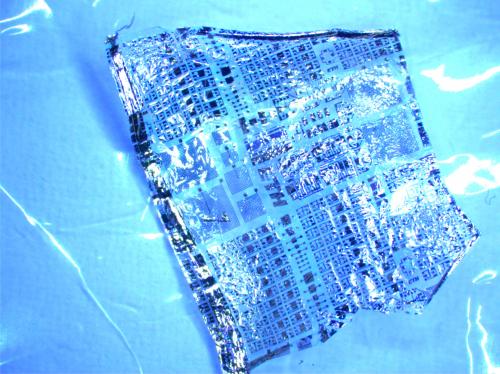According to the study led by Giovanni Salvatore at the Swiss Federal Institute of Technology in Zurich, researchers have successfully created functional electronic chips so flexible they can be wrapped around a single strand of human hair.

To achieve this new benchmark in ultraflexible electronics, the team first built an electronic circuit atop a sandwich of polyvinyl layers perched on a hard base.
The wafer was next placed in water, which dissolved two of the polyvinyl layers and caused the base to be released and sink to the bottom of the lab dish.
When this happens, what remains is a circuit embedded on a light, transparent non-soluble polymer film called parylene that is just one micrometer thick.
The electronic circuit continues to work when bent; it even continued to function when wrapped around a strand of human hair, which is about 50 micrometers thick.

There are plenty of uses for this sort of technology. It was already tested on an artificial eye in the lab, where the circuit was added to a contact lens to serve as a monitor for glaucoma (where pressure builds up dangerously in the eyeball).

It could see additional uses in other areas, ranging from flexible solar cells to wearable biosensors.
The electronics “can be transferred on any object, surface and on biological tissues like human skin and plant leaves,” according to the study.
It’s likely to be a number of years before this sort of circuit is seen in commercial medical or environmental devices, as there are a number of hurdles still to be cleared before they can be practically implemented.
The study was published in Nature Communications , where it can be purchased in full.
Story via phys.org
Advertisement
Learn more about Electronic Products Magazine





